Poo. It’s a dirty word, and in some parts of the world, a taboo. But everyone does it – the average person alone produces 72.5kg of faecal matter annually. Some of it gets treated, some of it is left to float around, but nearly all of it has an economic value.
Last year, the UK’s first bus powered by human poo hit the roads of Bristol and in January this year, the Janicki Omniprocessor, a machine that turns human poo into water was revealed. Janicki Bioenergy, the company behind the machine, is soon to ship a processor to Dakar, Senegal, where it will produce 10,800 litres of water.
Here are some other examples of how waste is being integrated into sustainable, circular design and production with environmental and social benefits.
Stools made from stools
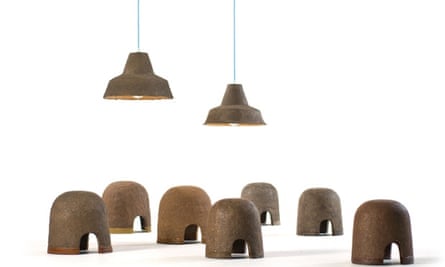
There are seats made from urine and sand, so it’s almost inevitable that there would be furniture fashioned from poo, or to be more precise, a mixture of horse manure, straw and other agricultural waste. The stools and lampshades, known as Terra, were the creation of Tel Aviv-based designer Adital Ela.
Ela believes the idea could inspire the future of interior design and that anyone could eventually make their own household items from waste collected locally. After use, the objects can be remoulded with water or composted. She even envisages a future where the making process could become a craft and provide communities in developing countries with added income.
Poo to the slaughter
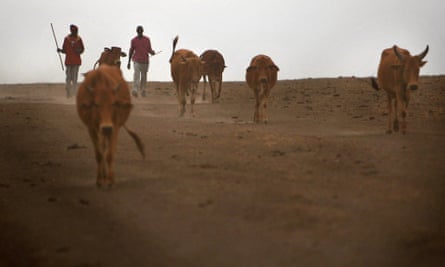
In Kenya, Maasai pastoralists in Kajiado County are generating electricity for a slaughterhouse using byproducts from the animal killing process: blood, guts and even poo. The facility can pipe gas to local businesses, while any waste sludge is turned into fertiliser. The group of 320 pastoralists expect to sell cylinders of the gas from March. Each one would be priced at Ksh 700 ($8/£5.20) – roughly half of the price of standard gas.
Usually the slaughterhouse waste would be burned, so with more than 500 cattle and sheep being killed daily, the process will also ensure that a lot of methane doesn’t enter the atmosphere.
Let cow poo provide the power
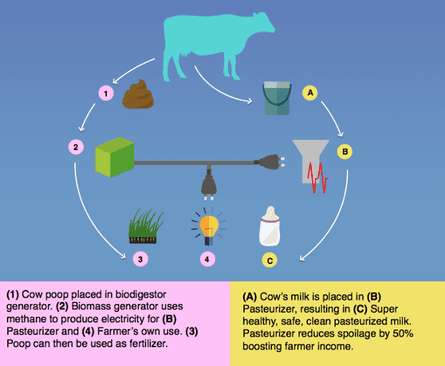
In the future, poo won’t just be the fertiliser that grows the fruit, vegetable and crops. It could also close the nutrient cycle by powering food production systems.
A team of Stanford University PhD students are developing a low-cost machine for pasteurising milk that runs on methane from dung. According to Sarah Rizk, co-founder of the technology, Vorpal, a cow’s poo can pasteurise 10 times the amount of milk it produces. By relying on the animal to power the biodigestor, the system can ensure that methane emissions are reduced, less milk is spoiled and farmers’ incomes are boosted.
“The cow provides all the power we need to pasteurise the milk. With this system, farmers can be fully self-sufficient and customers wouldn’t have to pay [more to cover the costs of] electricity for pasteurisation,” explains Rizk. “We use a high voltage pulse to directly kill bacteria rather than heating up the whole volume of milk. Because of this, we cut energy use in half.”
Writing on rhino poo
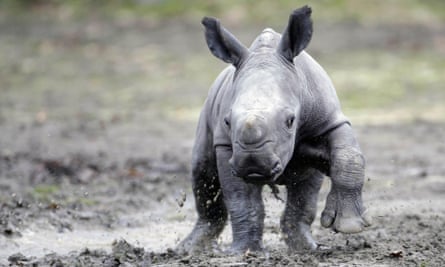
Standard paper production can use vast amounts of water and chemicals and emit high levels of CO2. A number of small businesses have found an alternative to energy-intensive virgin wood: elephant and rhino poo – there’s a lot of it going around: according to the WWF, Indian elephants can excrete 220lb (100kg) of dung a day.
Mumbai-based Elrhino is one of the businesses recovering the waste and converting it into a range of stationery. The dung is a perfect raw material because it’s high in celluose (the main fibre used to make paper), explains ElRhino’s co-founder Nisha Bora. The company manages the dung production chain from the sourcing and preparation to the selling. Bora says that “the art of making paper by hands is dying”, so having control over the supply chain means they can train local women and young people to provide them with economic opportunities and skills. It currently has several dozen employees.
ElRhino claims that the products sold are created using 44% less energy than virgin wood and generating 50% less waste.
Run your vehicle on panda poo
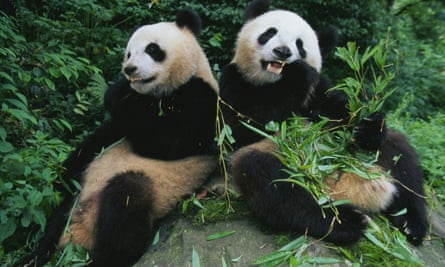
Biofuels from corn can be worse than gasoline when it comes to carbon emissions, according to experts. Researchers from the Mississippi State University concluded that waste plant material, such as corn cobs and stems, would be ideal alternative sources, with a little help from a cute animal: the panda.
Ashli Brown, who co-authored a report based on the research, presented at an American Chemical Society meeting, realised that the bear’s poo could help in the process of converting the waste – it contains a number of microbes needed to break down the material, thanks to the bacteria in the bear’s gut, which it uses to break down its diet of bamboo.
The panda’s ability to naturally convert material into the type of sugars that can be fermented into bioethanol is a sharp contrast to the current carbon-intensive options.
The circular economy hub is funded by Philips. All content is editorially independent except for pieces labelled ‘brought to you by’. Find out more here.
Join the community of sustainability professionals and experts. Become a GSB member to get more stories like this direct to your inbox.
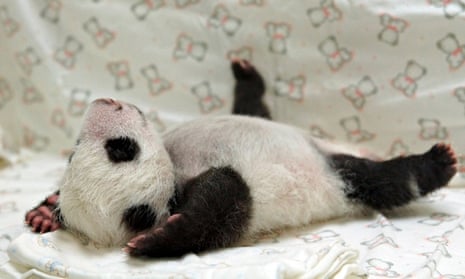
Comments (…)
Sign in or create your Guardian account to join the discussion